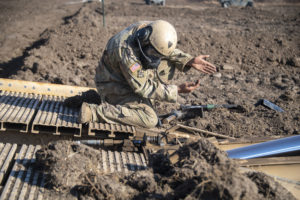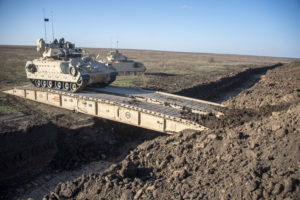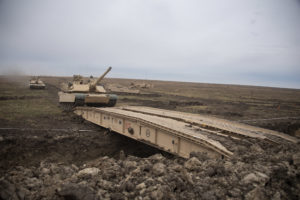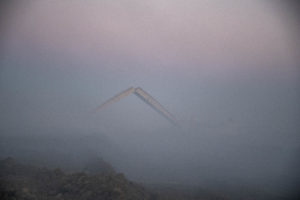By Maj. Eric V. McDonald, Test & Evaluation Officer, Maneuver Support and Sustainment Test Directorate, U.S. Army Operational Test Command
FORT RILEY, Kansas — 1st Infantry Division Soldiers here recently finished operational testing of a new heavy assault bridge designed to cross wet and dry gaps, both natural and man-made.
The Joint Assault Bridge (JAB), is a track-wheeled armored engineer vehicle built on a modified M1A1 Abrams Main Battle Tank (MBT) chassis.
With an integrated hydraulic bridge launcher system, the next generation vehicle is designed to provide assault-bridging capabilities to provide freedom of maneuver to modern armored forces.
The Army currently requires an updated assault bridge to replace the aging Armored Vehicle Launched Bridge (AVLB), according to Lt. Col. Christopher Ingenloff, the test officer from U.S. Army Operational Test Command, Fort Hood, Texas.
The JAB is specifically designed to replace the AVLB and provide freedom of maneuver on the battlefield while keeping pace with armored forces, said Ingenloff.
During the 11-day operational test, of force-on-force training, Soldiers from 3rd Battalion, 66th Armor Regiment, and 1st Engineer Battalion, 1st Armored Brigade Combat Team, 1st Infantry Division conducted over 40 natural gap crossings and 22 combined-arms breaches of anti-vehicle tactical obstacles.
“The amount of hands-on training we received, really gave all of us confidence in the equipment and our capabilities going into the field problem,” said Sgt. Molly Atkinson, a vehicle commander from 3rd Platoon, Alpha Company, 1st Engineer Battalion.
Trainers from Program Executive Office Combat Support & Combat Service Support, Warren, Michigan, and Maneuver Support Center of Excellence, Fort Leonard Wood, Missouri, gave detailed and all-inclusive new equipment operator training, field-level maintenance new equipment training, and training on doctrine, tactics and techniques during the weeks before the operational test.
“Gap crossings and breaching operations are complex missions that require our engineer assets to work in concert with maneuver,” said Capt. Mitchell Ables, Company Commander for Bravo Company, 1st Engineer Battalion. “The JAB allowed us to maintain tempo throughout.”
Another Company Commander, Capt. Stephen Schnorf, of Charlie Company, 3rd Battalion, 66th Armor Regiment, said, “The opportunity for us to conduct combined-arms breaching operations on this scale, with this much land, assets, and time, while simultaneously testing the JAB was a win-win.”
The operational test was led by the Maneuver Support and Sustainment Test Directorate, U.S. Army Operational Test Command, from Fort Hood, Texas.
~~
About the U.S. Army Operational Test Command:
As the Army’s only independent operational tester, OTC tests Army, joint, and multi-service warfighting systems in realistic operational environments, using typical Soldiers to determine whether the systems are effective, suitable, and survivable. OTC is required by public law to test major systems before they are fielded to its ultimate customer — the American Soldier.
The Maneuver Support and Sustainment Test Directorate conducts operational tests of combat engineer, chemical, transportation, military police, quartermaster, ordnance and medical service systems in order to provide our senior leaders with the necessary information to field the highest quality equipment for the warfighter.






